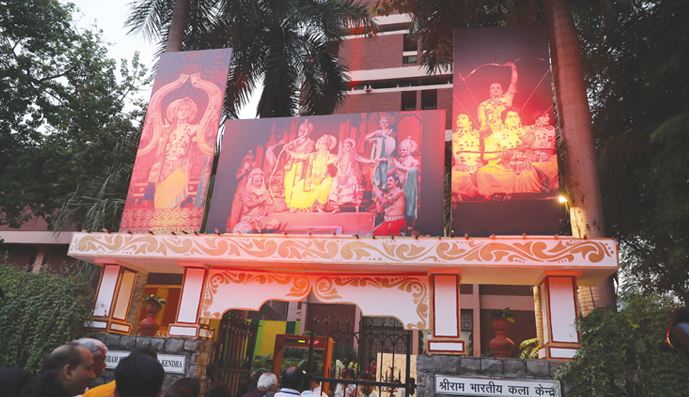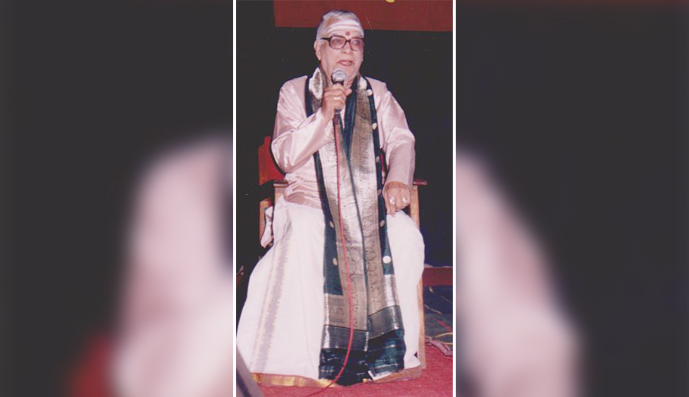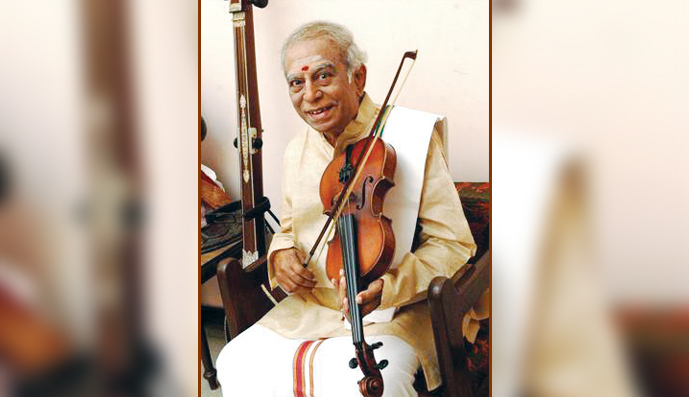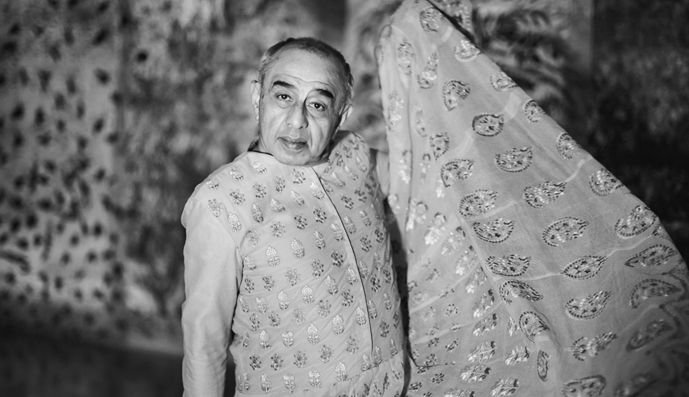The Shriram Bharatiya Kala Kendra has a long history of music and dance in the country. The journey of this iconic institution began on the midnight of India’s Independence—15 August 1947—when the Kendra’s founder, Sumitra Charat Ram, organised an all-night musical soireee at her residence in New Delhi to celebrate the historic event in which most of the leading musicians of the time participated. This led to the formation of the Jhankar Music Circle, which eventually culminated in a registered society called the Bharatiya Kala Kendra in 1952. In 1961, the Kendra created the Bharatiya Kala Kendra Trust to own and manage the Kendra’s campus in Delhi and the facilities located therein. In 1976, the Society was renamed Shriram Bharatiya Kala Kendra (SBKK). Sumitra’s tutelage under legends like Rabindranath Tagore, Madan Mohan Malaviya, Jaishankar Prasad, Mahadevi Varma, and Ramdhari Singh Dinkar, instilled in her an abiding interest in India’s art and culture. Her marriage to Charat Ram, son of Lala Shri Ram of the DCM Shriram Group, which was one of the top industrial houses, was an added impetus to the pursuit of her passion to preserve and propagate classical music and dance. Through the Shriram Bharatiya Kala Kendra, Sumitra Charat Ram went on to realise her twin dreams of giving a boost to Kathak and to produce the Ramlila—a dance-drama on the life of Lord Ram. Her contributions to Indian culture won her the Padma Shri in 1966. (See Sruti 324).
Nellai T.V. Krishnamurthy was a respected musician and teacher who served as Principal of Swati Tirunal Academy of Music, Tiruvananthapuram. Scion of Harikesanallur Muthiah Bhagavatar, he was born in Tiruvarur, Tamil Nadu, to Muthulakshmi Ammal and Viswanatha Iyer on 24 November 1920. His is an unusual story of a boy born in Tamil Nadu going to Kerala to emerge as a Carnatic musician. Noticing the boy’s innate talent in Carnatic music, uncle Harikesanallur Muthiah Bhagavatar took the seven-year old under his wing as the child’s mother and his wife were sisters. Although the parents named him Sankaranarayana Sarma, his guru would affectionately call him “Krishnamurthy” which became his identity for life. Krishnamurthy learnt the rudiments of Carnatic music from gottuvadyam Sankaranarayana Bhagavatar, one of the early disciples of Muthiah Bhagavatar, before coming under the direct tutelage of the stalwart himself. He underwent strict training under the watchful eyes of the maestro and practised assiduously which enabled him to internalise the kritis and to develop the manodharma aspects essential to become a concert musician. He travelled widely with his guru to neighbouring states and remained a support to him. Krishnamurthy presented his first public performance at the Tyagaraja Utsavam in Tiruvaiyaru when he was seventeen. It was the beginning of a successful career in music.
The classical music of the West has influenced our musical culture, although it may not have done so in ways and on a scale easily comprehensible to us. The four broad areas in which the Western influence manifests itself are: (1) the two systems of classical music namely, Hindustani and Carnatic, (2) film and light music (sugam sangeet), (3) commercial TV advertising and (4) music education. In classical music The influence of Western classical music on Hindustani music does not seem to extend significantly beyond the harmonium—an instrument of European origin. The harmonium, due to its inherent limitations (inability to play srutis or micro-tones and meend or glissando) has failed to earn the wholehearted acceptance of purists in the Indian classical music fraternity. (The 22-sruti harmonium developed by Dr. Vidyadhar Oak of Mumbai has removed this limitation to a considerable extent). Today the harmonium is easily the most popular accompanying instrument in India among singers of Hindustani classical as well as light music. On the other hand, more Western instruments have been adapted in Carnatic music. The violin emerged long ago as the most preferred instrument for accompaniment as well as for solo recitals. Baluswami Dikshitar (1786-1858), brother of Muthuswami Dikshitar, trained by a foreign tutor, was among the first Indian musicians to play the violin. Today, it is hard to imagine a Carnatic music recital without this instrument. Most significantly, for their style and technique, Lalgudi G. Jayaraman and L. Shankar—brilliant violin virtuosi from the south—received encomiums from one of the greatest violinists of the last century Yehudi Menuhin (Menuhin and Shankar cut an album together).
Sonal Mansingh, Padma Vibhushan awardee, is much more than a dancer. Over the years, she has successfully re-invented herself from a Bharatanatyam exponent into an Odissi dancer, teacher, kathakar, composer, administrator, and is now a Member of Parliament, Rajya Sabha, nominated by the President of India. Articulate and confident, she champions the cause of women as well. She has been described as “like the mighty Ganga, she emerges flowing easily in each phase of her journey”. A pointer about Sonal Mansingh’s different values, and unique take on life, was evident in her choice of chief guest at the event to celebrate 75 years of her life—it was Bhagvati Kamakhya Devi, symbolically represented by an empty centreseat in the front row, on which was draped a red dupatta. During the celebrations called Sonalscape, presented by Shri Kamakhya Kalapeeth, Centre for Indian Classical Dances, established by the doyenne in New Delhi, Sonal Mansingh interacted with her audience for well over two hours—chatting about her life, how she came into dance, her relationship with her gurus, her accident resulting in a broken back and much else. Outspoken and informal, she frequently had her audience in splits of laughter.
CONTENTS Vol. 26 Issue 8
August 2019
6 News & Notes
12 Birthday calendar
14 Sonal Mansingh
22 Institution Shriram
Bharatiya Kala Kendra
32 Musicians of Kerala Nellai
T.V. Krishnamurthy
38 News & Notes (continued)
44 Wellness Yoga
for the human voice
46 Point of view Western
influence on Indian music
50 From the Editor
Front Cover: Sonal
Mansingh
(photo by Avinash Pasricha)






